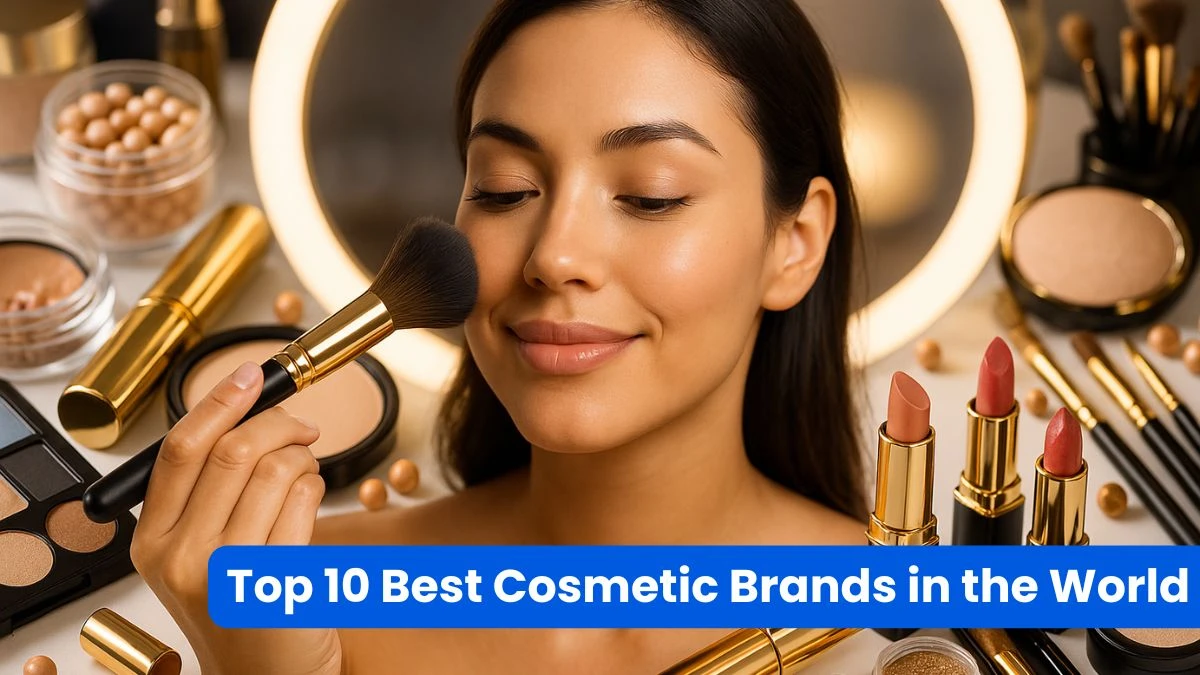Top 10 Best Cosmetic Brands in the World
The global cosmetics industry is a multi-billion-dollar powerhouse, driven by innovation, quality, and an ever-growing demand for beauty and skincare solutions.
From luxury makeup lines to cutting-edge skincare formulas, cosmetic brands continue to shape beauty standards and routines across the world.
Whether you're a professional makeup artist, skincare enthusiast, or someone who simply loves a good lipstick or moisturizer, the brands leading the industry are often those that combine effectiveness with elegance.
In this article, we take a closer look at the Top 10 Best Cosmetic Brands in the World—companies that have earned their place through exceptional products, iconic status, and a loyal global following.
These brands are not only trendsetters but also set the benchmark for quality, safety, and sustainability in beauty.
| Rank | Cosmetic Brand |
|---|---|
| 10 | NARS |
| 9 | Dior |
| 8 | Lancôme |
| 7 | Charlotte Tilbury |
| 6 | MAC Cosmetics |
| 5 | Shiseido |
| 4 | Fenty Beauty |
| 3 | Chanel |
| 2 | L'Oréal Paris |
| 1 | Estée Lauder |
10. NARS: Artistic Expression
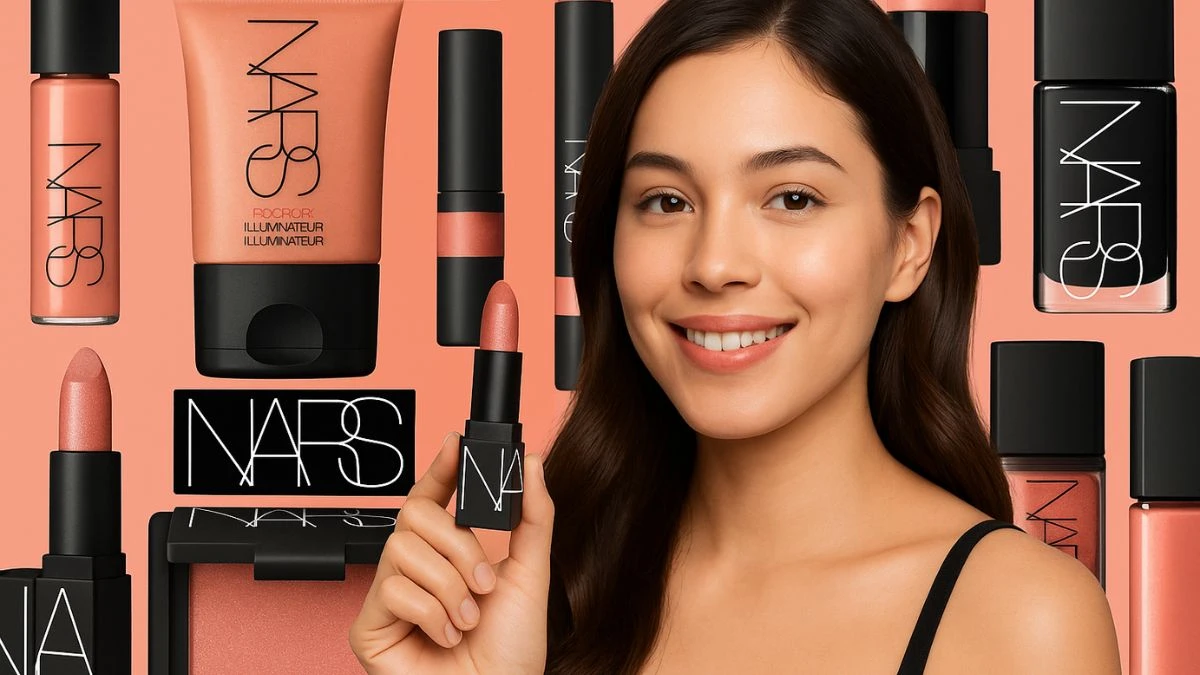
Founded: 1994 by makeup artist François Nars
Did You Know? NARS' most famous product, Orgasm blush, was named to capture the post-orgasmic glow Nars observed in his models, breaking taboos about sexual references in beauty marketing.
When François Nars launched his line with just 12 lipsticks sold at Barneys New York, he brought an editorial and photographic sensibility to consumer beauty. Having worked with photographers like Richard Avedon and models like Naomi Campbell, Nars understood how to translate high-fashion beauty into wearable products.
Beyond the legendary Orgasm collection (now expanded to multiple products), NARS has created artist-inspired products like the Audacious lipstick line and their collaboration with artist Man Ray. Their Multiple stick pioneered the concept of multi-use color products before "multi-tasking makeup" became an industry buzzword.
What truly sets NARS apart is their unapologetic approach to beauty—embracing bold colors, unexpected textures, and provocative naming conventions when most brands played it safe. This artistic integrity has earned them a devoted following among professional makeup artists and consumers seeking self-expression through beauty.
"NARS doesn't try to make beauty 'pretty' in the conventional sense," explains culture critic Xavier Jones. "They understand that beauty can be provocative, intellectual, even challenging—and that's precisely what makes it powerful."
While maintaining artistic credibility, the brand has expanded its shade ranges significantly in recent years and introduced more sustainable packaging options, proving that artistic vision and inclusivity can coexist beautifully.
9. Dior: Haute Couture Beauty
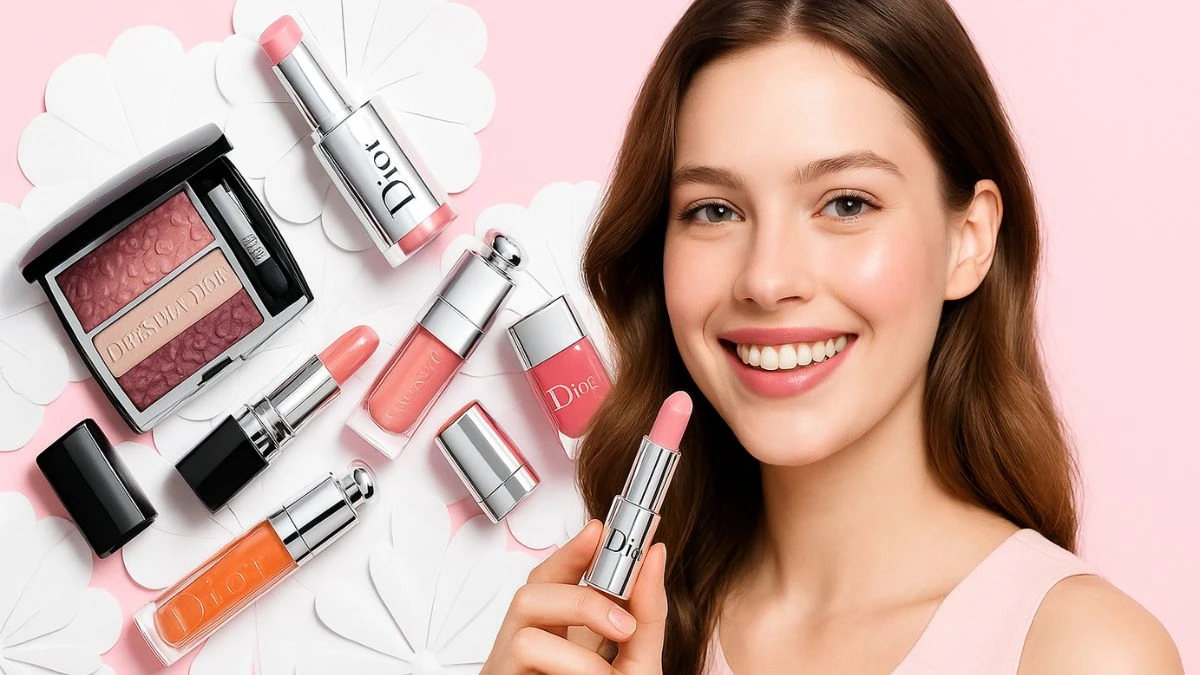
Founded: Beauty division established in 1955, after the success of Christian Dior's fashion house
Did You Know? Dior's first lipstick was designed to coordinate with the collection's fabrics, establishing the concept of beauty as a fashion accessory.
Christian Dior once said, "A woman's perfume tells more about her than her handwriting," and this attention to the transformative power of beauty products has defined Dior's approach to cosmetics. As a fashion house first, Dior brings runway sensibilities to their beauty line, creating products that work as the ultimate accessories.
Iconic innovations include Dior Addict lipstick, which introduced a new level of shine without stickiness, and Airflash spray foundation, which adapted professional airbrushing for home use. Their Rouge Dior lipstick, first created in 1953, remains a status symbol in the beauty world.
Dior's seasonal makeup collections, often created by Creative and Image Director Peter Philips, translate runway trends into wearable beauty, allowing consumers to participate in high fashion through more accessible products.
"What makes Dior exceptional is their commitment to artisanal approaches even in mass production," explains luxury analyst Sophie Martin. "Their compact powders are still hand-finished using techniques similar to those used for fine jewelry."
The brand has embraced sustainability with refillable lipstick cases and their Dior Gardens—specialized plots worldwide where they grow ingredients using sustainable methods, ensuring quality while reducing environmental impact.
8. Lancôme: Affordable French Luxury
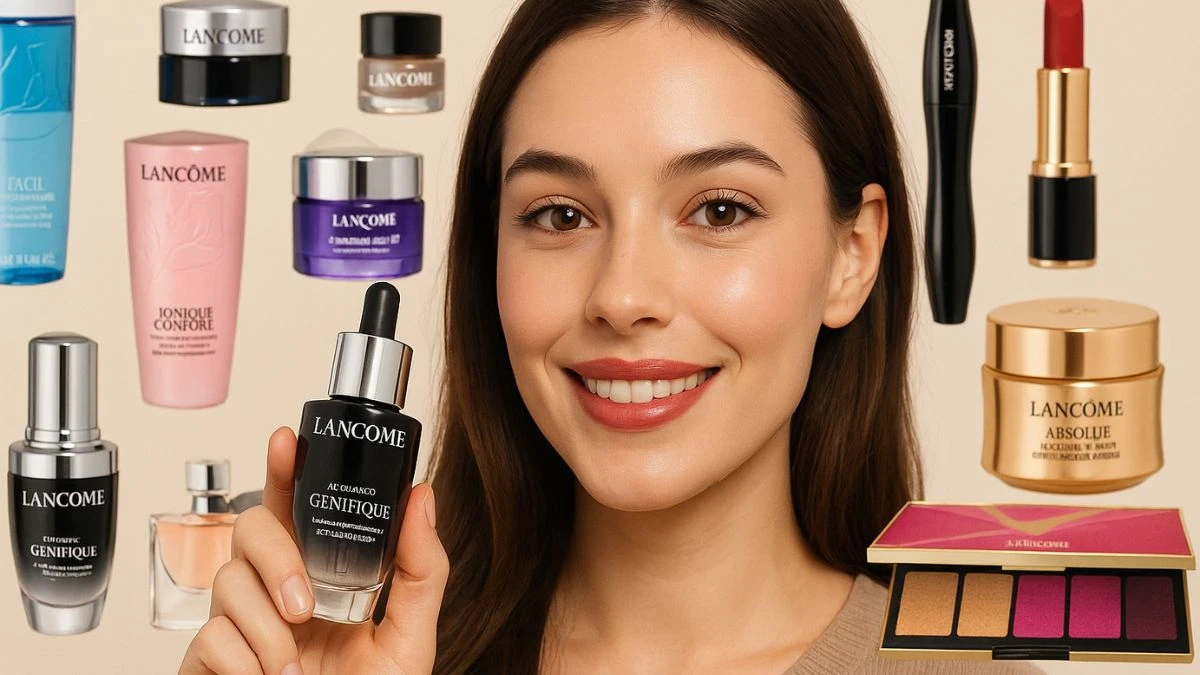
Founded: 1935 by perfumer Armand Petitjean
Did You Know? Lancôme's name and rose symbol were inspired by the roses at the ruins of a French castle, Le Château de Lancosme.
With the tagline "La vie est belle" (Life is beautiful), Lancôme embodies French beauty philosophy—sophisticated, refined, and effortlessly elegant. Now owned by L'Oréal, the brand maintains its distinctive identity while benefiting from cutting-edge research capabilities.
Lancôme's innovations include Génifique serum, which pioneered microbiome science in skincare, and Bifacil eye makeup remover, which has remained largely unchanged for decades because its dual-phase formula was perfected the first time. Their mascara technology, particularly Hypnôse, has consistently set industry standards.
The brand balances heritage and modernity through strategic ambassadors ranging from Isabella Rossellini to Zendaya and Lupita Nyong'o, showcasing beauty across generations and backgrounds. Their product development similarly spans traditional luxury (like their La Vie Est Belle fragrance, a global bestseller) and innovative technology (such as their custom-made foundation device).
"Lancôme represents accessible luxury at its finest," says beauty entrepreneur Michelle Phan. "They've found the sweet spot between prestige and approachability that many brands aspire to but few achieve."
The brand's Lancôme For Women program focuses on literacy and mentorship for young women worldwide, demonstrating their commitment to beauty as a form of empowerment rather than mere aesthetics.
7. Charlotte Tilbury: Celebrity-Inspired Glamour
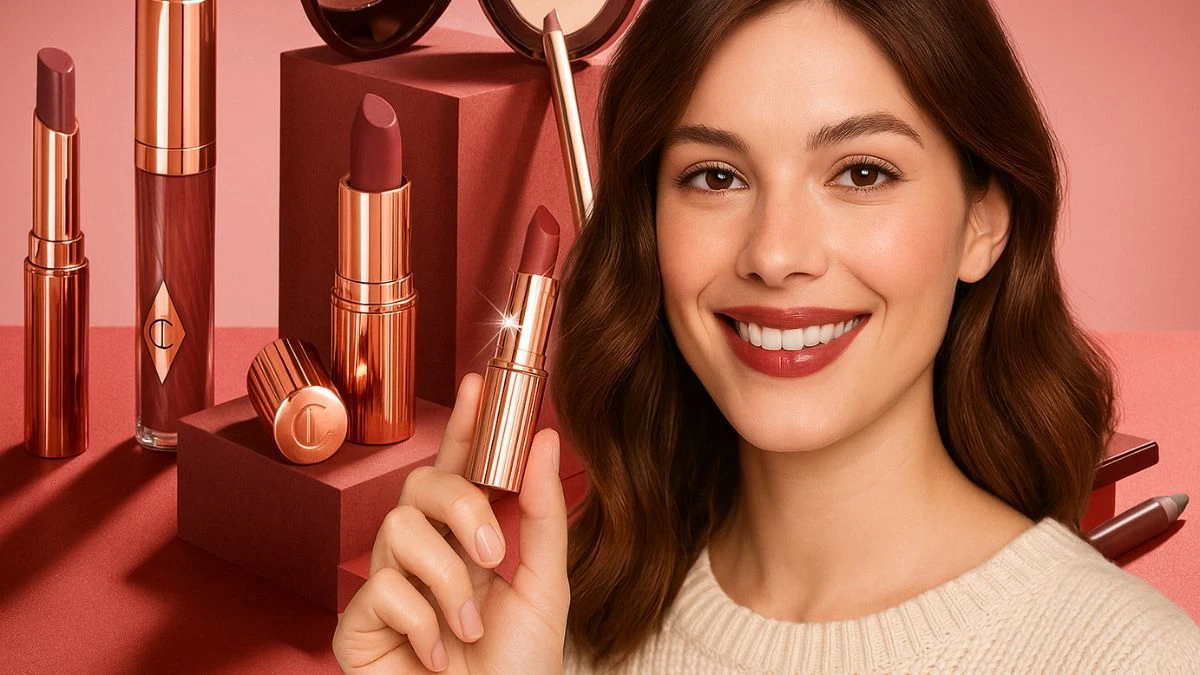
Founded: 2013 by celebrity makeup artist Charlotte Tilbury
Did You Know? Charlotte's Magic Cream was originally mixed by hand and used on Tilbury's celebrity clients for years before becoming a commercial product.
Few brands have achieved Charlotte Tilbury's level of cult status in such a short time. Leveraging her 25+ years of experience working with celebrities and fashion houses, Tilbury created a brand that promises to unlock everyone's "most beautiful self" through her insider techniques.
Products like Pillow Talk lipstick (one sold every two minutes globally) and Hollywood Flawless Filter have become modern classics, while her "10 Look Wardrobe" concept has revolutionized how consumers approach makeup, offering complete looks rather than individual products.
Tilbury's genius lies in demystifying makeup artistry through products with explicit promises—"Film Star Bronze & Glow" for cheekbones like a silver screen icon or "Airbrush Flawless Foundation" for a filtered finish.
This approach bridges the gap between professional application and everyday users.
"Charlotte didn't just build a brand; she built a beauty universe with its own language and iconography," notes beauty psychologist Dr. Vivian Morris. "The rose gold packaging, the names invoking celebrity glamour—it's a complete fantasy that consumers can participate in."
The brand has expanded rapidly into skincare and fragrance, always maintaining Tilbury's signature blend of science-backed formulation with glamorous presentation and aspirational marketing.
6. MAC Cosmetics: The Professional's Choice
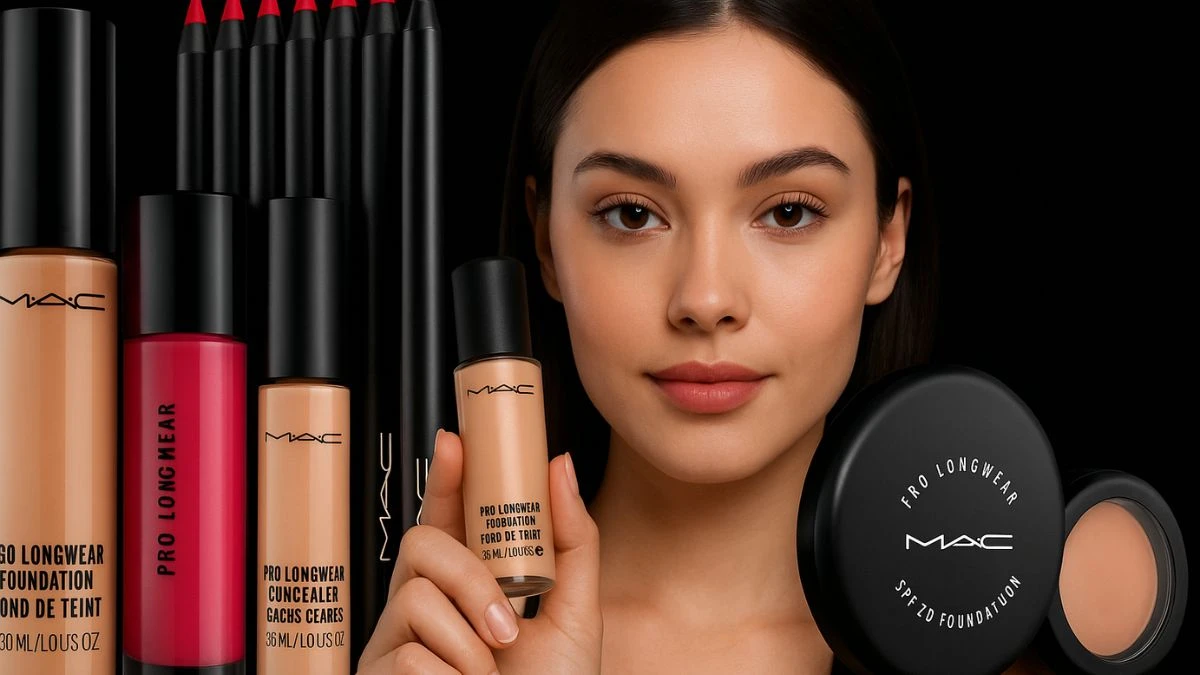
Founded: 1984 by makeup artist Frank Toskan and salon owner Frank Angelo in Toronto
Did You Know? MAC originally created products for professional photographers because existing makeup didn't photograph well under studio lights.
From its humble beginnings selling products from a Toronto department store counter, MAC (Makeup Art Cosmetics) has become the go-to brand for makeup professionals worldwide. Their backstage presence at fashion weeks globally cemented their reputation as the artist's choice.
MAC's iconic products include Ruby Woo, perhaps the most famous red lipstick in the world, and Studio Fix Fluid foundation, a staple in professional kits. Their color range and pigment intensity set new standards for the industry, allowing artists to create looks previously possible only with specialized theatrical makeup.
The brand's Viva Glam campaign, launched in 1994, has raised over $500 million for HIV/AIDS causes, pioneering the concept of beauty with purpose. This campaign featured groundbreaking ambassadors like RuPaul and k.d. lang at a time when most beauty brands played it safe with their imagery.
"MAC doesn't just create products; they create community," explains veteran makeup artist Pat McGrath. "When I started in the industry, MAC counters were where artists gathered to share techniques and inspiration."
Now owned by Estée Lauder, MAC has maintained its artistic credibility while expanding its environmental initiatives, including their Back to MAC recycling program that predated most sustainability efforts in the industry.
5. Shiseido: Eastern Wisdom Meets Western Science
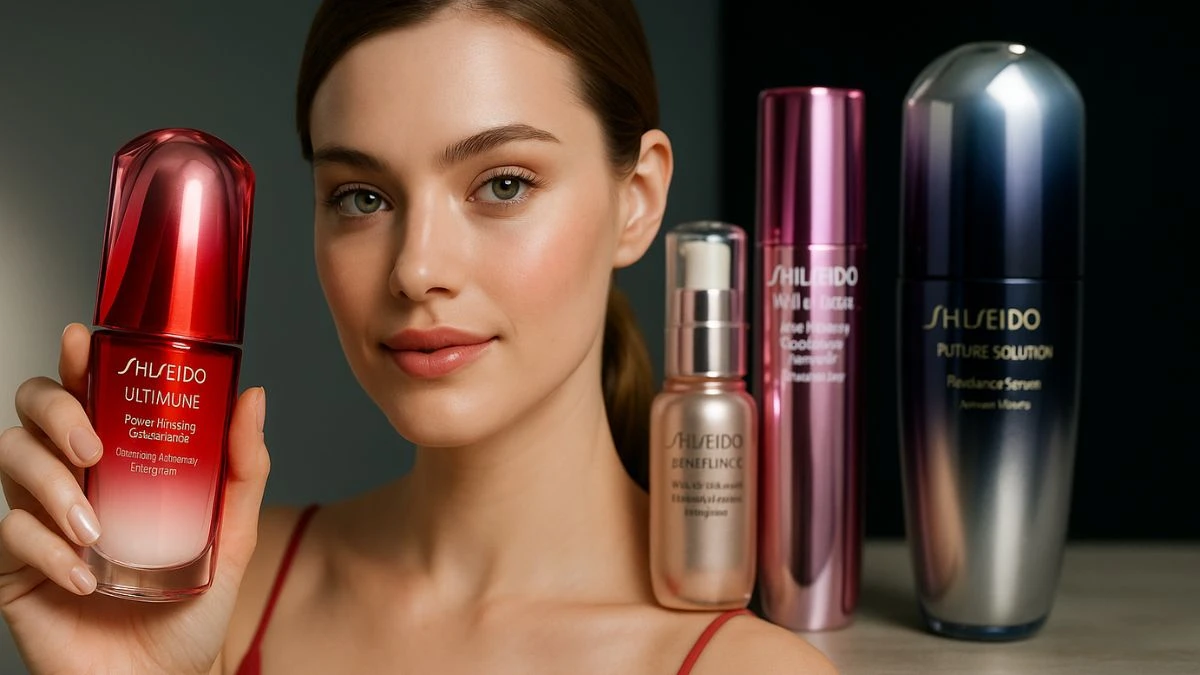
Founded: 1872 in Tokyo's Ginza district as Japan's first Western-style pharmacy
Did You Know? Shiseido's name comes from a passage in the Chinese classic "I Ching," and means "praise the virtues of the great Earth which nurtures new life and brings forth new values."
With nearly 150 years of history, Shiseido represents the perfect marriage of Eastern skincare philosophy and cutting-edge science. The Japanese brand has always prioritized skin health as the foundation of beauty, influencing global skincare trends toward prevention and protection.
Shiseido's innovations include the first brightening serum featuring Vitamin C derivatives that remain stable in formulation, and their Ultimune Power Infusing Concentrate, which pioneered the concept of skin immunity in beauty. Their sunscreen technology is considered among the best in the world, with formulations that feel lightweight while providing superior protection.
"What makes Shiseido remarkable is their patient approach to development," says dermatologist Dr. Anna Kim. "They might research a single ingredient for decades before incorporating it into products."
The brand's artistic heritage—they've maintained an art gallery in Tokyo since 1919—influences their approach to product design and packaging. Each item feels like a small piece of art, with ergonomic packaging that enhances the user experience.
Shiseido's "Dynamic Harmony" philosophy emphasizes balance between tradition and innovation, East and West, science and nature—a philosophy that has allowed them to remain relevant across three centuries.
4. Fenty Beauty: The Inclusive Revolutionizer
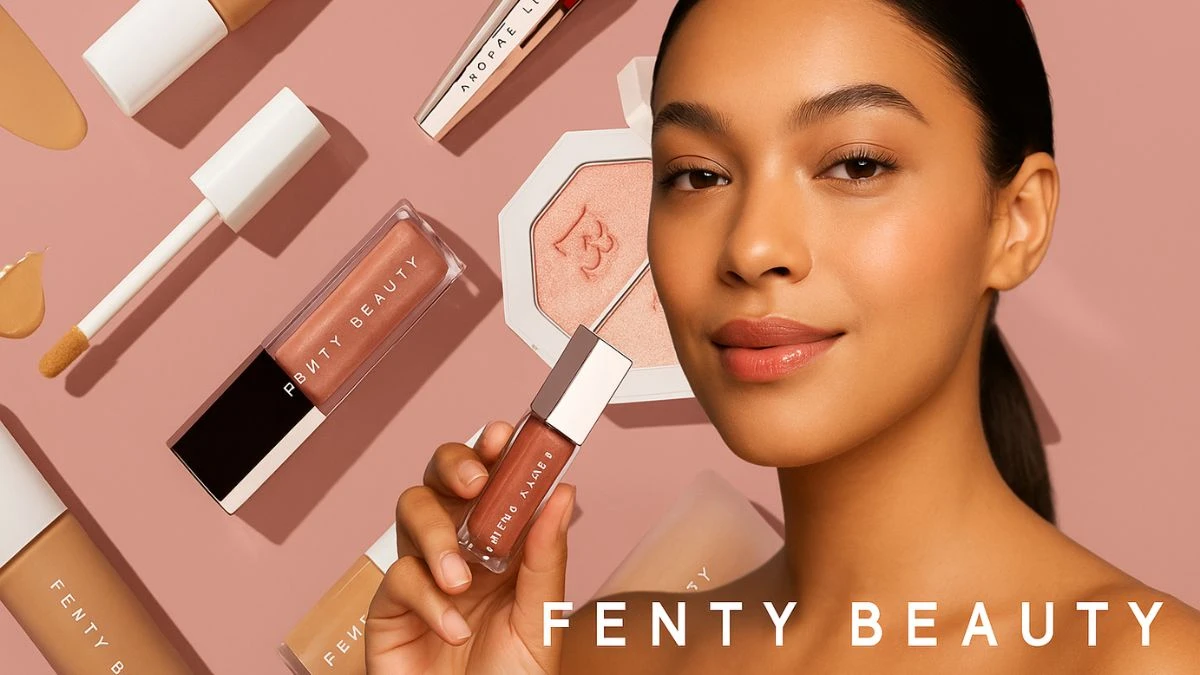
Founded: 2017 by Rihanna in partnership with LVMH
Did You Know? When Fenty Beauty launched with 40 foundation shades (now expanded to 50+), it forced the entire industry to reconsider their shade ranges almost overnight.
In just a few years, Fenty Beauty has accomplished what many established brands failed to do in decades: truly revolutionize inclusivity in the beauty industry. Launched with the mission to create formulas that work for all skin types and tones, Rihanna's brand generated an estimated $570 million in revenue in its first year alone.
The Pro Filt'r Soft Matte Foundation became legendary for its comprehensive shade range, while products like the Gloss Bomb Universal Lip Luminizer proved that universally flattering products could exist. The brand's Trophy Wife highlighter created a new standard for boldness in mainstream beauty products.
"Before Fenty, many brands would claim a shade was 'universal' when it only worked for a narrow range of skin tones," explains beauty editor Jordan Williams. "Fenty forced the entire industry to acknowledge that 'universal' means everyone or it means nothing."
Fenty's marketing has been as revolutionary as its products, featuring models of all skin tones, ages, genders, and sizes—a stark contrast to the homogeneous beauty campaigns that dominated the industry for decades. The brand's social media presence encourages customers to become co-creators, sharing their own Fenty looks under hashtags that regularly trend worldwide.
With sustainable packaging initiatives and cruelty-free formulations, Fenty has proven that new brands can build ethics into their DNA from day one.
3. Chanel: Timeless Luxury
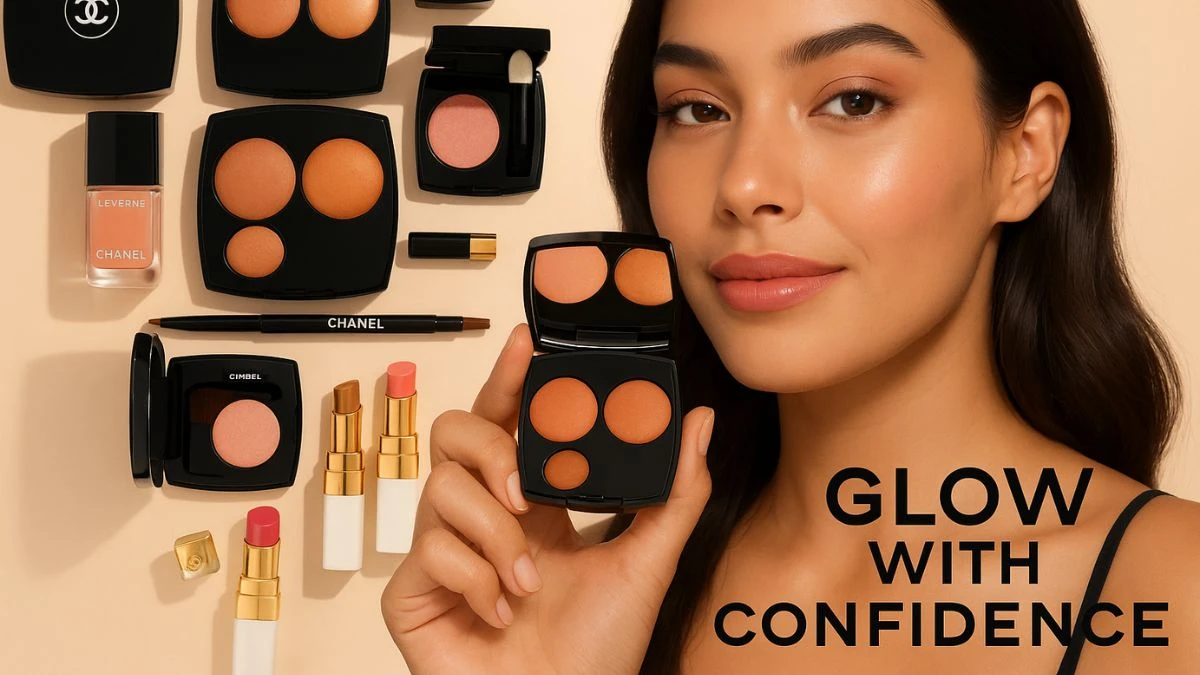
Founded: Beauty division established in 1924 when Coco Chanel launched No. 5 perfume
Did You Know? Marilyn Monroe famously said she wore "only a few drops of Chanel No. 5" to bed, cementing the fragrance's iconic status.
Few brands embody luxury quite like Chanel. From their iconic interlocking C's to their minimalist black and white packaging, Chanel has maintained an aura of exclusivity while becoming globally recognized as the pinnacle of sophisticated beauty.
Beyond the legendary Chanel No. 5, the brand has created numerous industry-defining products. Their Rouge Allure lipsticks, with their satisfying click-case design, and Les Beiges collection, which pioneered the "no-makeup makeup" aesthetic before it became an Instagram trend, showcase their ability to both create and predict beauty trends.
Chanel's beauty philosophy centers on enhancing natural features rather than transforming them—a philosophy embodied by Lucia Pica, their Global Creative Director for makeup, who has pushed the brand toward more artistic expressions while maintaining its classic appeal.
"Chanel doesn't follow trends—they create them," says fashion historian Diana Vreeland III. "When everyone went maximalist, they stayed true to their aesthetic of refined elegance, and the market eventually came back to them."
While slower to embrace sustainability than some competitors, Chanel has recently committed to reducing carbon emissions and creating more eco-friendly packaging, proving that heritage brands can evolve without losing their identity.
2. L'Oréal Paris: Beauty For All
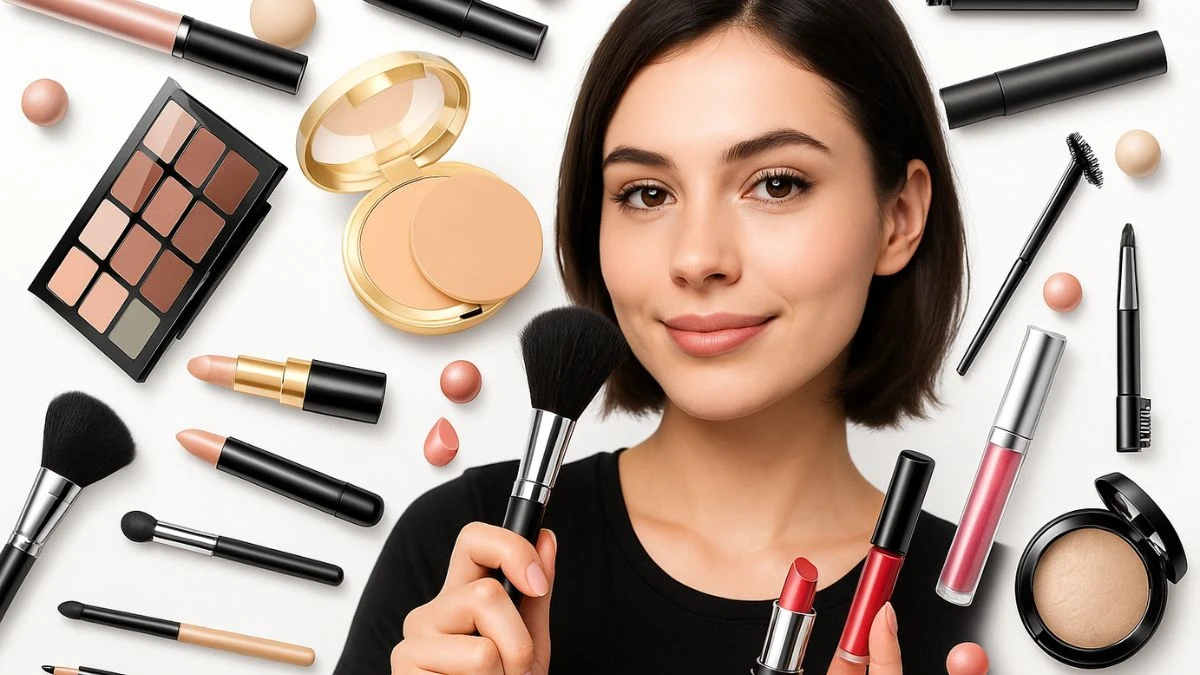
Founded: 1909 by Eugène Schueller, who created the first synthetic hair dye
Did You Know? L'Oréal processes over 7 billion units across all their brands annually—enough to circle the Earth several times.
With their iconic tagline "Because You're Worth It," L'Oréal Paris has been democratizing beauty for over a century. As the world's largest cosmetics company, they've maintained their position through relentless innovation and accessibility.
L'Oréal's research capabilities are unmatched, with over 4,000 researchers working in facilities worldwide. Their breakthrough technologies include Revitalift's retinol alternatives for sensitive skin and True Match foundation, which revolutionized shade matching with its inclusive range when launched.
The brand has leveraged celebrity partnerships effectively, with ambassadors ranging from Jane Fonda to Viola Davis, showcasing beauty across all ages and backgrounds. Their Makeup Genius app, which allows virtual try-on of products, demonstrates their commitment to digital innovation.
"What makes L'Oréal exceptional is their ability to make scientific advancements available at accessible price points," notes celebrity makeup artist James Chen. "They've created a formula where innovation doesn't have to come with a luxury price tag."
The company has committed to ensuring 100% of their plastic packaging is reusable, recyclable, or compostable by 2030 as part of their "L'Oréal For The Future" sustainability program.
1. Estée Lauder: The Legacy Powerhouse
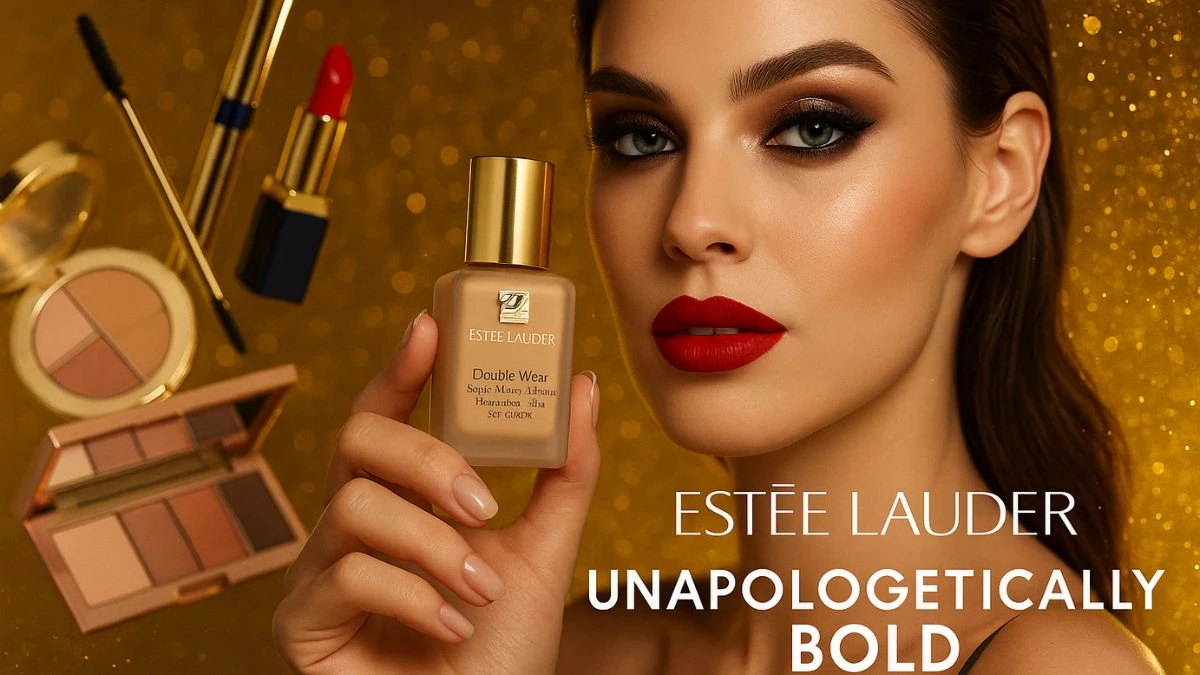
Founded: 1946 by Estée Lauder, who began by selling skin creams created by her chemist uncle in beauty salons and hotels
Did You Know? Estée Lauder pioneered the free gift with purchase concept, forever changing beauty marketing.
When Estée Lauder launched her eponymous brand with just four products, she couldn't have imagined creating a global empire spanning over 25 brands and reaching consumers in 150 countries. Her personal touch—applying creams on women's hands in department stores—transformed into a company that now owns MAC, Clinique, and La Mer among others.
Signature products like Advanced Night Repair (first launched in 1982 and continually reformulated with cutting-edge science) have maintained cult status for decades. The brand's innovation extends beyond formulations to include the Clinique Computer—the first-ever diagnostic tool for customized skincare recommendations—launched in 1968 and revolutionizing how consumers approached their routines.
"Estée Lauder's scientific approach to skincare created a blueprint that the entire industry now follows," says Dr. Melissa Jenkins, cosmetic chemist and beauty historian. "Their research facilities continue to set industry standards for efficacy testing."
The company has committed to reaching net zero carbon emissions by 2030 and ensuring 75-100% of their packaging is recyclable, refillable, reusable, or recoverable by 2025—proving legacy brands can lead in sustainability as well.
The Evolution of Beauty: Yesterday, Today, and Tomorrow
Beauty is never static. What began with crushed berries and natural pigments has evolved into laboratories developing molecular-level innovations.
Today's beauty landscape is defined by clean formulations, unprecedented shade inclusivity, and digital integration.
As we look at the brands leading the industry, we're seeing a future where personalization, sustainability, and technological advancement converge to create beauty experiences tailored to each individual's needs and values.
Beyond the Products: How Top Brands Are Redefining Beauty
Today's leading beauty brands aren't just selling products—they're selling philosophies, experiences, and values. Inclusivity has moved from buzzword to business imperative, with expanded shade ranges becoming the new minimum standard rather than a marketing point.
Brands like Fenty and MAC have led the way, forcing the entire industry to reconsider who they're formulating for.
Scientific advancement continues at an unprecedented pace, with brands investing heavily in proprietary technologies.
Estée Lauder's research into skin's nighttime repair processes, Shiseido's work on skin immunity, and L'Oréal's AI-powered skin analysis represent the cutting edge of beauty science.
Digital innovation has transformed how we shop for beauty. Virtual try-on technologies pioneered by L'Oréal and perfected by newer brands allow consumers to experience products before purchasing.
Dior's fragrance personality quiz and Charlotte Tilbury's virtual consultations have translated the personalized counter experience to digital platforms.
Sustainability has become non-negotiable, with brands racing to reduce packaging waste, source ingredients responsibly, and decrease carbon footprints.
MAC's Back to MAC program, Lancôme's refillable Absolue line, and Dior's sustainable sourcing show different approaches to the same essential goal.
Discalimer: The ranking and selection of the "Top 10 Best Cosmetic Brands in the World" are based on general market perception, global popularity, product quality, brand reputation, customer reviews, and industry recognition. This list is subjective and may vary depending on personal preferences, skin types, regional availability, and evolving market trends. It is not sponsored by any brand mentioned, nor does it imply endorsement or affiliation. Readers are encouraged to conduct their own research and consult skincare or beauty professionals before purchasing or using any cosmetic products.

